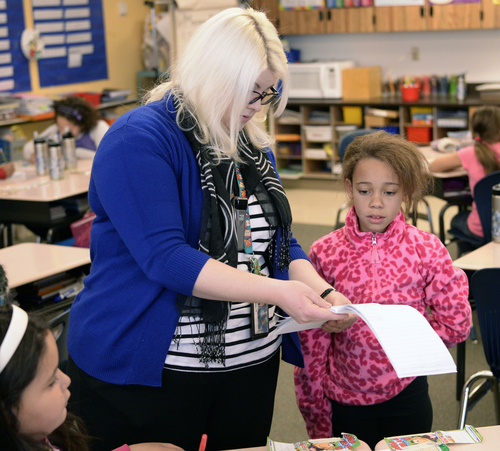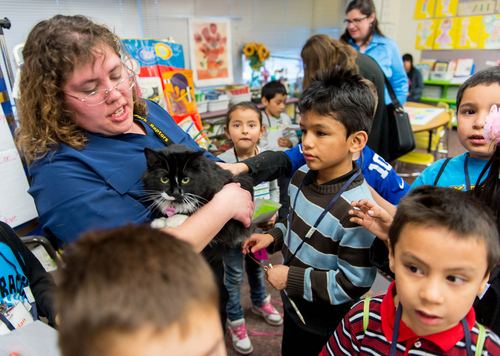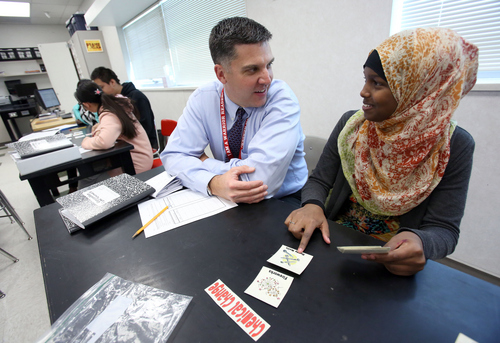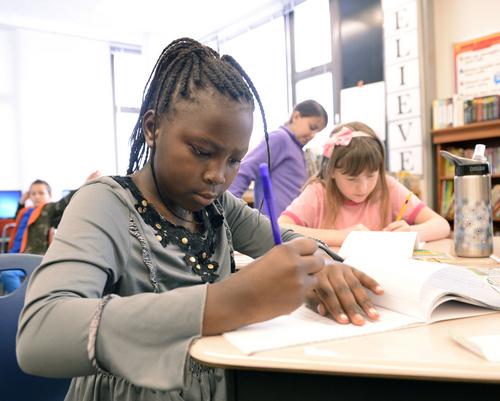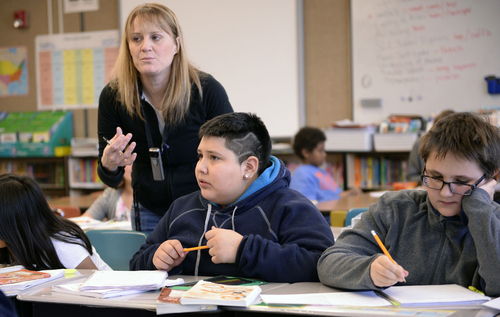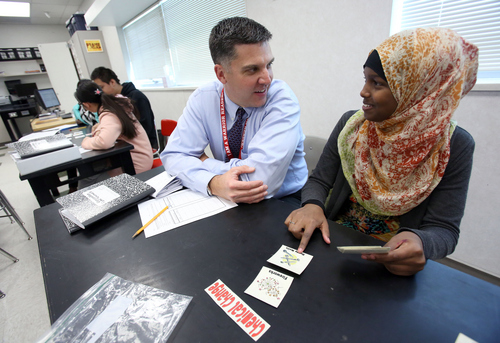This is an archived article that was published on sltrib.com in 2014, and information in the article may be outdated. It is provided only for personal research purposes and may not be reprinted.
Minority children fare worse in Utah than their white counterparts, but there are plenty of challenges — poverty, and poor access to health care and education — to go around, according to a new national study.
The study, "Race for Results: Building a Path of Opportunity for All Children" is being released Tuesday by the Annie E. Casey Foundation's Kids Count project.
For nearly two decades, the foundation has joined with Voices for Utah Children to research the well-being of Utah children.
The new study, however, is the first time there's been a close look at how children fare by ethnic group, said Terry Haven, deputy director for Voices for Utah Children.
The data on 12 different measures, ranging from pre-kindergarten participation to teen pregnancy to child poverty rates — will be updated every three years, she said.
The Kids Count Data Center website allows users to learn results on each of the 12 measures, by race and ethnic group.
This first study is a baseline by which Utah can measure how well it's doing by children, Haven said.
For instance, the Legislature just passed HB96, which will create high quality preschool curriculum for at-risk kids.
"In three years can we look at whether putting more money into preschool is working," Haven said.
Theresa Martinez, who teaches sociology at the University of Utah, called the national study and Utah's piece of it "important" for its depth and breadth.
"The hammer comes down more on children of color, but there are children suffering in each group. There are poor white families and struggling white children," she said.
The new study assigns a single composite score — on a scale of one to 1,000 — based on the 12 measures for each race or ethnic group.
White children in Utah scored 712; Asian and Pacific Islander children, 627; black children, 511; American Indian children, 400; and Latino children, 370.
Utah's scores were not dramatically different from national scores, except for one group: black children, who have much higher well-being in Utah than elsewhere. The national composite score for black children was 345. Utah had the third highest score among the states.
Haven said the discrepancy, in part, has to do with the fact that there are few blacks in Utah. Only 1 percent of Utah children are black, while 75 percent are white and 17 percent are Hispanic or Latino.
While children of color live in poverty at a higher rate than their white peers, poverty is "a white issue as well," Haven said.
For instance, the state has more than twice as many poor white children as the next largest group, Hispanics and Latinos.
More than a third of white Utah children, 223,000, live in families with income below $46,500 for a family of four, which is 200 percent of the poverty level.
Some 72 percent of Hispanic or Latino children, or 106,000, live in such families.
"The biggest takeaway [from this study] is the future prosperity of Utah depends on all children having the same opportunity," Haven said.
In one way or another, nearly all the measures of well-being have to do with financial security, Haven said.
"To me, it's really a poverty issue," said Haven. "We have to deal with poverty."
Martinez agreed. "What we need to do as a state is face these disparities and start to turn this around."
Twitter: @KristenMoulton




